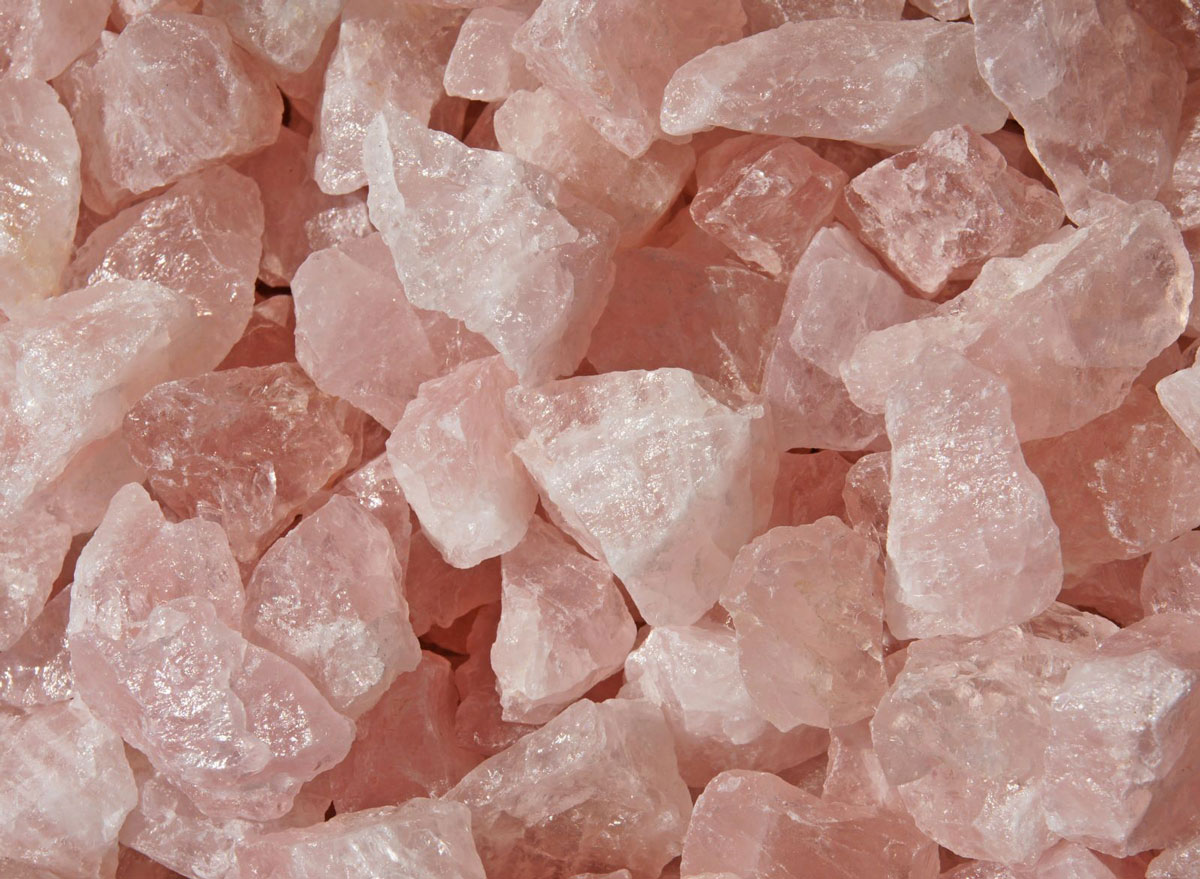Substances | 8 min read
What Is Pink Meth? Drug Facts, Effects, And Treatment
Medically Reviewed By

On April 24, 2023
Written By
On April 24, 2023

Pink meth is a form of methamphetamine with a unique rosy-pink color.
The color usually implies the substance has been tampered with [1] or was incorrectly manufactured. In some cases, it has been dyed, and a fruity flavor has been added.
The public interest in pink meth can be traced back to a now-debunked media story about children being targeted with candy-laced methamphetamines. While this was largely found to be false, there’s no question that sweet, pink meth is being produced as a street drug.
It may look and even taste like candy, but this crystalline substance is a deadly drug with devastating short-term effects and long-term health risks.
What Is Pink Meth?
Pink meth is the same substance as crystal meth. It’s often dyed the color pink with food coloring or other additives. Because of its color, some people may think the drug is less potent or purer, but this is a dangerous misconception. Pink-colored meth is associated with all of the same legal risks and health problems as any other color meth. It can also lead to a dangerous and sometimes lethal methamphetamine addiction.
Methamphetamine is a Schedule II controlled substance according to the United States Drug Enforcement Administration. [2] This is the same classification given to other highly addictive drugs like PCP and cocaine. Whatever the color, possessing crystal meth, using it, or selling it is considered a felony offense.
Methamphetamine As A Prescription Drug
Methamphetamine does have some limited medical uses. It is often prescribed to treat attention deficit hyperactivity disorder, or ADHD. Methamphetamine may also be used in some diet or weight-loss medications since it has the side effect of decreasing appetite. Taking a prescription version of methamphetamine is much different than smoking or injecting pink meth or any other form of crystal meth.
When prescribing methamphetamine as a medication, healthcare providers mitigate the risk by controlling the dosage and carefully monitoring their patients’ health, including any related side effects. Using meth without a prescription or taking someone else’s ADHD medication is considered drug abuse and is illegal, not to mention dangerous.
Risks and Dangers of Pink Meth
Regardless of its seemingly-innocent color, pink meth comes with a long list of dangers and risks, some of them life-threatening.
Addiction
Meth is one of the most addictive types of illicit drugs. It rapidly floods the brain with dopamine, leading to a sense of euphoria. As a stimulant drug, pink meth also results in increased energy and gives the user a sense of well-being. These pleasant feelings are fleeting, though, and many people continue to use them in order to feel euphoric again. Studies suggest two out of three meth users over the age of 26 meet the criteria for a substance use disorder. [3]
Some experts speculate that crystal meth, including pink meth, is even more addictive than cocaine because it stays in the brain longer. Meth can also deplete the brain of its natural dopamine supply, causing the person to rely on the drug to feel a general sense of wellness.
Cardiovascular Stress
The American Heart Association has recently spoken out about the increasing number of heart-related deaths due to methamphetamine abuse.[4] Chronic methamphetamine use can take a heavy toll on the heart, leading to:
- Early heart disease
- Cardiomyopathy
- Arrhythmia
- Spikes in blood pressure
- Narrowing of blood vessels
- Rapid heart rate
- Stroke
- Heart attack
Cardiovascular deaths are a leading cause of death for meth users, second only to fatal overdose.
Neurological Damage
Meth use, including pink meth use, directly affects the brain. It can cause changes in brain chemistry and structure that can impact cognition and even mental health. Some of the potential neurological effects include: [5]
- Hallucinations
- Psychosis
- Schizophrenia-like symptoms
- Agitation
- Confusion
- Memory problems
- Attention deficits
- Cognitive decline
- Paranoia
- Emotional instability
Potential for Overdose
The potential for overdose is perhaps one of the greatest risks of taking meth. Methamphetamine use has been called a public health concern due to the high risk of overdose. The CDC reports that meth is the second most commonly found drug found in overdose victims. [6] People may mistakenly think pink meth is less potent than other colors of meth and take more of the drug to compensate. This can lead to an even higher overdose risk.
Unknown Additives and Side Effects
Another concern regarding pink meth in particular is the additional ingredients added to the meth to give it the pink hue. Often, drug dealers don’t disclose what the additive is, and there’s always the potential that it too could be a harmful or even illicit substance. Meth is often laced with other dangerous drugs such as fentanyl. These added substances pose additional risks, including an increased risk of overdose.
How to Identify Pink Meth
Pink meth is perhaps most recognizable by its color, but there may be other clues as well. Like other types of crystal meth, meth takes the form of a crystalline structure, similar to a jagged rock. It may be various shades of pink or even red in hue. Some types of pink meth are flavored with additives such as candy, syrup, or soda. These additional ingredients could make pink meth taste sweet or sour or both. Pink meth may go by street names such as:
- Strawberry Quick Meth
- Pink Champagne
- Flavored Meth
Is Strawberry Meth Real?
Strawberry quick meth is one of the street names for pink meth. However, strawberry flavored meth was the subject of a hoax—a hoax that sparked widespread fear that drug dealers were targeting kids using crystal methamphetamine that tasted like strawberries and resembled Pop Rocks candy. Although the concerns were proven unwarranted, flavored meth, and even methamphetamine lollipop, do exist. There’s no evidence that these are being marketed to children, however. Still, meth remains a pressing public health concern. Any form of substance abuse related to meth is dangerous.
| Quick Facts On Risks | Appearance | Myth Vs. Reality. | |
| Pink Meth |
|
|
Myth: Not as potent as regular meth
|
| Crystal Meth |
|
|
|
Pink Meth Drug Facts
Pink meth is still methamphetamine at its core and shares many of the same characteristics. It’s a stimulant substance that affects the central nervous system by rapidly increasing dopamine release. CNS stimulants produce intense highs and give temporary euphoric effects.
Due to these brain responses and its highly addictive qualities, all forms of methamphetamine are classified as Schedule II controlled substances by the Drug Enforcement Administration (DEA). Like its predecessor, the designer drug pink meth comes in powder, liquid, and crystal form and is snorted, smoked, or injected.
In crystal form, pink meth resembles rosy shards of glass or translucent pop rocks. When in its powder form, pink meth resembles a powdered drink mix, hence inspiring one of its street names, “strawberry quick.”
Street Names For Pink Meth
Traditional street names for meth include crank, speed, ice, and crystal, to name a few. Pink meth has added strawberry meth, pink crack, and strawberry quick to the list of monikers.
Meth Colors: What Do They Mean?
In most cases, the color of meth reveals that additives have been mixed into the substance creating a reaction. The color of the substance [7] is not a reliable indicator of how potent it is or if it was safely manufactured.
Due to the inconsistency and lack of regulation on how the meth was produced and what it may have been produced with, colored methamphetamines pose a greater risk of dangerous effects. Different colors of methamphetamine have also been associated with specific side effects and health outcomes, specifically overdoses and abscesses.
Pink Meth
Pink methamphetamine powders and crystals may reveal a manufacturing process that was incomplete. It could also indicate that red-colored cold medications, like Sudafed or other off-brand tablets, were used as additives to change the taste and the appearance of meth.
Blue Meth
Meth in blue form is a newer form of methamphetamine that was popularized by the hit TV show, Breaking Bad. The common misconception is that because it is blue, it is pure.
However, this isn’t true at all. Blue meth contains contaminants or additives such as blue chalk or food coloring to get its blue hue. In more extreme manufacturing processes, they’ll use pseudoephedrine (the active ingredient in Sudafed) or even battery acid to change the color.
White Meth
White or clear meth is its standard form. However, in this case, the white color is not an indicator that it hasn’t been mixed with additives or contaminants.
It could still be mixed with other substances such as iodine, lithium metal, hydrochloric acid, sulfuric acid, or red phosphorus. These substances may not change in color but could increase the risk of overdose.
Yellow Meth
Also known as “base,” yellow meth can have a higher potency than powdered meth and is usually a wet and oily substance that is yellow and brown in color. This form is most commonly injected or swallowed.
Side Effects and Health Risks Of Pink Meth
There is no question that meth is a dangerous substance. Partly due to its addictive properties and partly due to the lasting health risks. Some of which are only partially reversible, if at all.
Side Effects of Pink Meth
Due to its stimulant effects, like increased dopamine release and feelings of euphoria, and its slow metabolism rate, some side effects may not begin immediately. Common side effects range from uncomfortable to dangerous. Pink meth use side effects include:
- Nausea and vomiting
- Flu-like symptoms
- Chronic fatigue
- Bursts of hyperactivity
- Reduced appetite
- Unexplained weight loss
- “Shakes” or Body tremors
- Constant muscle aches
- Heavy sweating
- Poor sleep patterns
- “Meth sores” (sores on the face and body that resemble severe acne)
- Body temperature irregularity
- Inability to stop taking meth
While these physical symptoms will be uncomfortable and potentially dangerous, just as troubling is the list of psychological symptoms that may also be present:
- Depression
- Anxiety
- Pink meth cravings
- Chronic irritability
- Withdrawing from work, school, family, and hobbies
Detox and Withdrawal Symptoms of Pink Meth Use
There are many severe detox and meth withdrawal symptoms that people may experience when undergoing the detox process on their own. Admitting to a safe and reliable medical detox facility can reduce the experience of these withdrawal symptoms and give you a higher level of comfort.
- Some detox symptoms include:
- Seizures
- Suicidal ideation
- Psychosis
- Paranoia
- Aggressive behavior
- Increased appetite
- Hallucinations
If you or a loved one are struggling with meth use and experiencing any or several of these severe symptoms, please seek emergency medical care right away.
Long-Term Effects of Pink Meth
Pink meth, like all forms of meth, negatively and severely impacts brain chemistry. Long-term use can cause damage to the areas of the brain that manage cognitive skills and learning abilities. Long-term meth use also leads to other effects, such as:
- Violent behaviors
- Aggressive mannerisms
- Facial and body scars (from meth sores)
- Coughing and other flu-like symptoms
- Moodiness
- Confusion
- Hearing voices
- Delusional ideations
- Insomnia and sleep disruption
- Nosebleeds (primarily for snorted meth)
Dangerous Health Risks of Pink Meth
Even from early usage, pink meth is highly addicting and easily leads to overdose. Over long-term meth use, your body’s natural dopamine levels will decrease. [8]
This leads to requiring higher doses and more frequent doses in order to meet physical demands and cravings. Some brain damage to cognitive processing can lead to a lifetime of impaired learning.
Other Long-Term Health Risks Include:
- Increased risk of having a stroke
- Rotting teeth
- Increased risk of gum disease
- Delusional ideations
- Increased risk of seizures
- Symptoms of psychosis
- Symptoms similar to Parkinson’s disease
- Increased risk of heart problems
- Increased risk of HIV (primarily for injected meth)
Pink Meth Detox and Substance Use Disorder Treatment
There is life beyond substance through meth addiction treatment. And it’s happier, healthier, and safer for you and your loved ones.
Medical Detox For Pink Meth
The early stages of detox are a difficult and challenging time. The symptoms can be uncomfortable and even dangerous, especially if you’re attempting to detox alone.
A medical detox will help reduce symptoms of withdrawal as well as drug cravings and will provide constant monitoring to increase your comfort and safety.
Ongoing Treatment
After detox, it’s critical for you or your loved one to receive ongoing care and support. Inpatient Programs offer living accommodations and daily treatment, while Partial Hospitalization Programs still offer daily care but give you the freedom to sleep at home.
Intensive Outpatient Programs are the next level of care, offering increasing flexibility without sacrificing regular treatment. Outpatient Programs are a good fit for those who have already completed a higher level of care and are ready to reintegrate back into daily routines.
Effective long-term support includes individualized aftercare plans with group support, coping skill practice, and multifaceted therapy interventions. By continuing in treatment as long as necessary, you create a future that is bright and free.
Frequently Asked Questions About Pink Meth
The taste of pink meth depends on what it was cut with or if any flavorings were added. In some cases, it is sweeter than other forms of meth and can reduce the acidic taste. However, tasting like candy is not an accurate depiction of pink meth use.
Due to the low cost of producing meth, it is commonly used to cut other drugs when illegally manufactured. Cocaine, ecstasy, and other stimulant drugs are common substances you may find meth has been added to.
Pink meth is an illegally manufactured substance. Because there are no standard production and manufacturing guidelines, it is impossible to know how potent any one dose will be. This is even more difficult to determine without knowing what has been added to it.
Recover From Pink Meth Use In The Safety Of A Medical Detox Program
If you or a loved one are struggling with pink meth use, we’re here to help. You don’t have to attempt recovery on your own. It’s dangerous and, in many cases, unsuccessful. There is a better way. In order to fully succeed in your recovery and achieve lasting personal wellness, you need dedicated, individualized, and practical support and treatment. Call Ascendant NY today to learn more about you can start your recovery.
Ascendant New York Editorial Guidelines
Here at Ascendant New York, we understand the importance of having access to accurate medical information you can trust, especially when you or a loved one is suffering from addiction. Find out more on our policy.
[1] Strathdee, S. A., Case, P., Lozada, R., Mantsios, A. R., Alvelais, J., Pu, M., Brouwer, K. C., Miller, C. L., & Patterson, T. L. (2008). The American journal on addictions. The color of meth: Is it related to adverse health outcomes? an exploratory study in Tijuana, Mexico. Retrieved from https://www.ncbi.nlm.nih.gov/pmc/articles/PMC3176304/ on 2023, March 8
[2] Drug scheduling. DEA. (n.d.-a). https://www.dea.gov/drug-information/drug-scheduling
[3] [6] U.S. Department of Health and Human Services. (2025b, January 30). Methamphetamine. National Institutes of Health. https://nida.nih.gov/research-topics/methamphetamine#addictive
[4] Meth and heart disease: A deadly crisis we don’t fully fathom, report says. www.heart.org. (2021, August 16). https://www.heart.org/en/news/2019/08/21/meth-and-heart-disease-a-deadly-crisis-we-dont-fully-fathom-report-says
[5] Jayanthi, S., Daiwile, A. P., & Cadet, J. L. (2021, October). Neurotoxicity of methamphetamine: Main effects and mechanisms. Experimental neurology. https://pmc.ncbi.nlm.nih.gov/articles/PMC8338805/
[7] U.S. Department of Justice, National Drug Intelligence Center. Methamphetamine Fast Facts (NDIC Publication No. 3981). Retrieved from https://www.justice.gov/archive/ndic/pubs3/3981/3981p.pdf on 2023, March 8.
[8] T. B. Verywell Mind. (2021, November 1). Long-term effects of meth (methamphetamine) use. Retrieved from https://www.verywellmind.com/meth-addiction-causes-effects-treatment-5666979 on 2023, March 8




